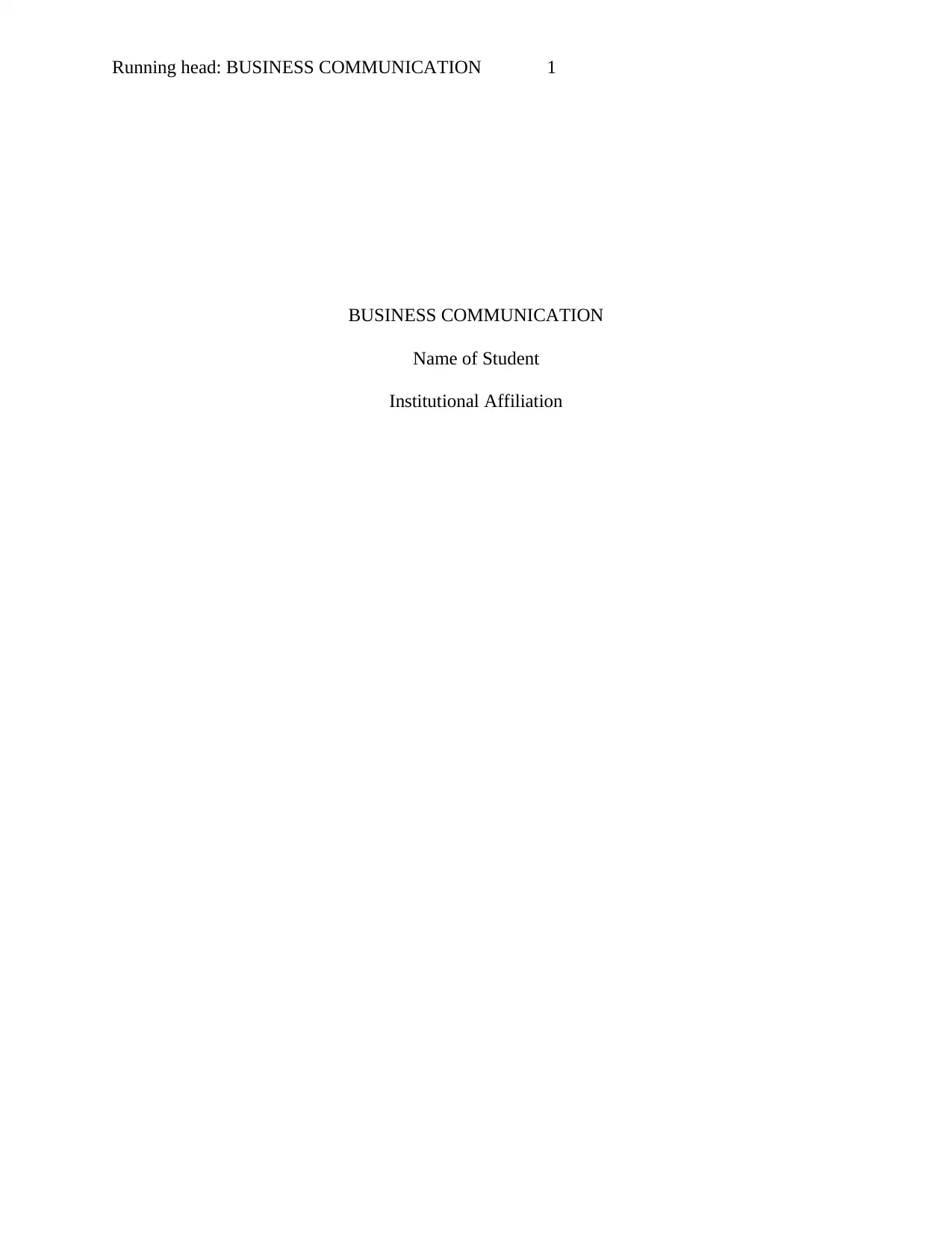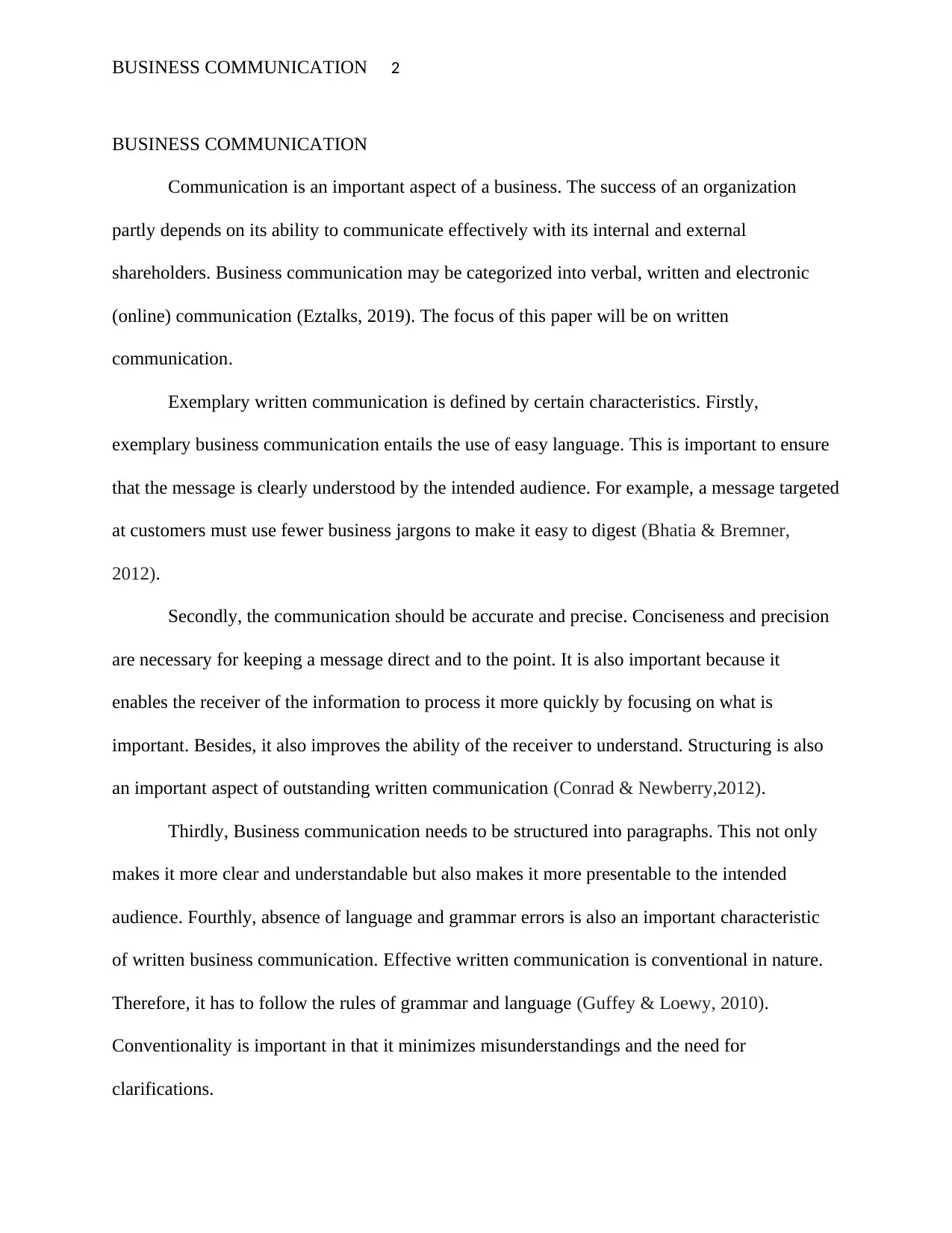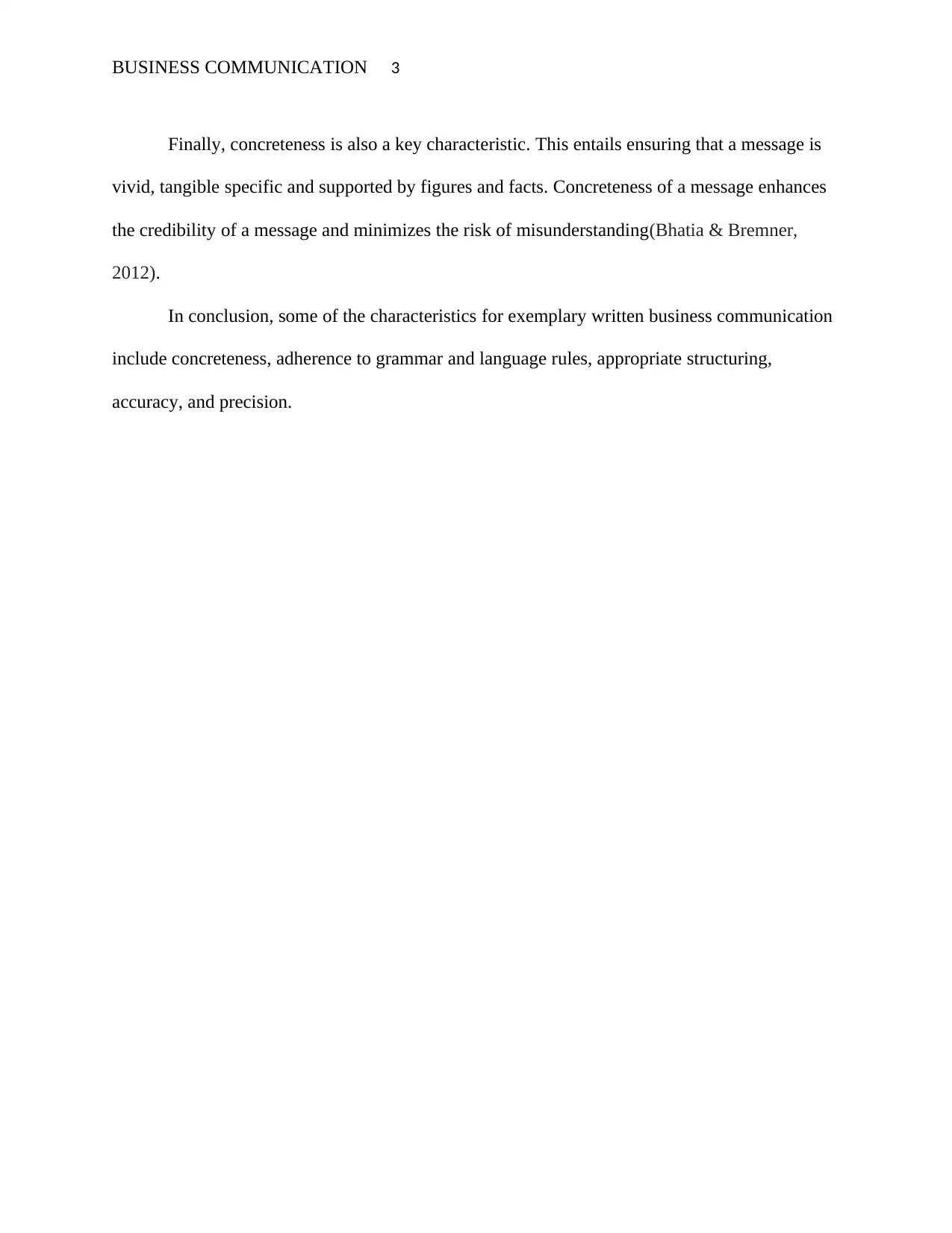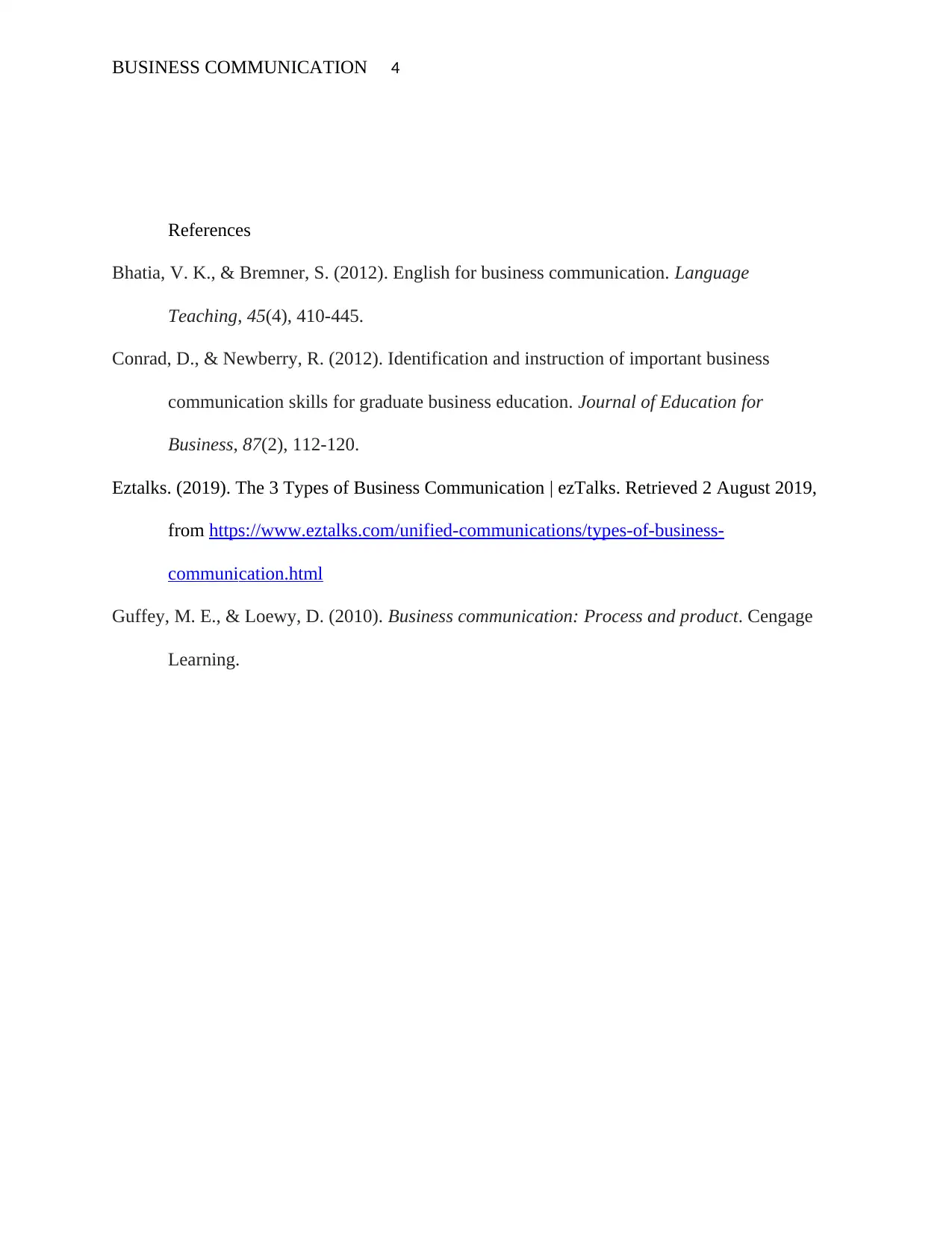Business Communication Report: Characteristics, Structure and Examples
VerifiedAdded on 2022/10/11
|4
|507
|15
Report
AI Summary
This report delves into the core aspects of effective written business communication. It highlights key characteristics such as the use of clear and concise language, accuracy, and precision. The report emphasizes the importance of structuring the communication appropriately, including the use of paragraphs to enhance clarity and readability. It underscores the significance of adhering to grammar and language rules to minimize misunderstandings and the need for clarifications. Furthermore, the report stresses the importance of concreteness, advocating for messages that are vivid, tangible, specific, and supported by facts and figures to enhance credibility. The report concludes by summarizing these characteristics, providing a comprehensive overview of the elements that contribute to exemplary written business communication.
1 out of 4




![[object Object]](/_next/static/media/star-bottom.7253800d.svg)